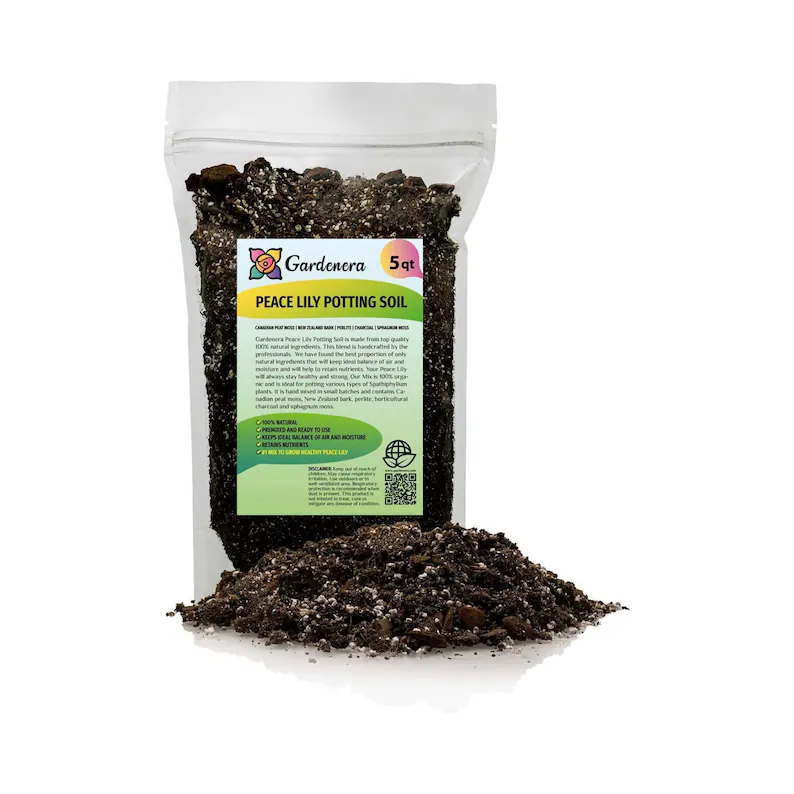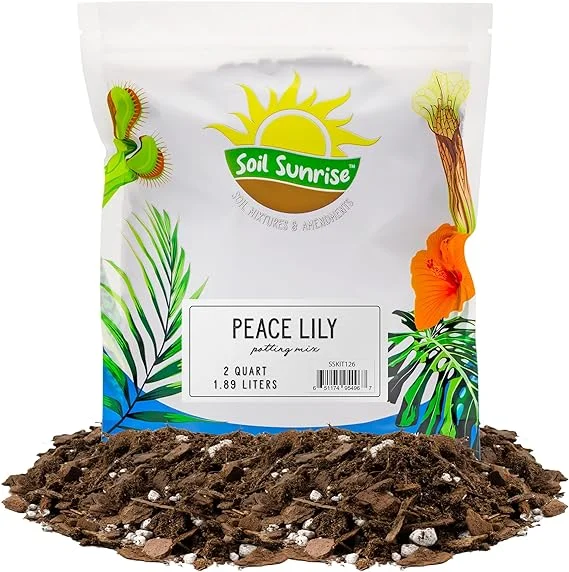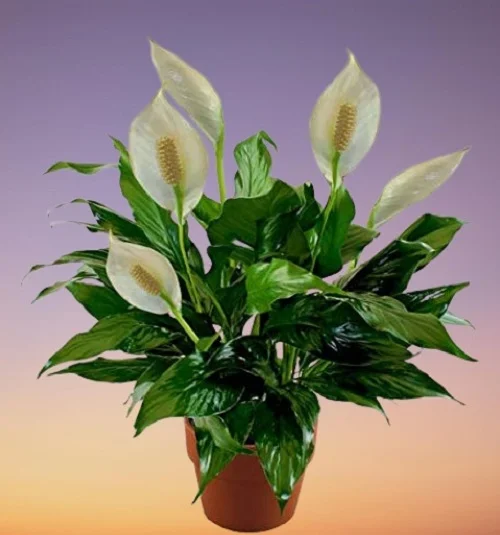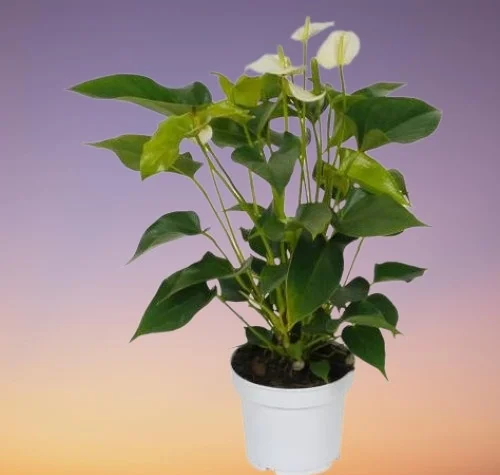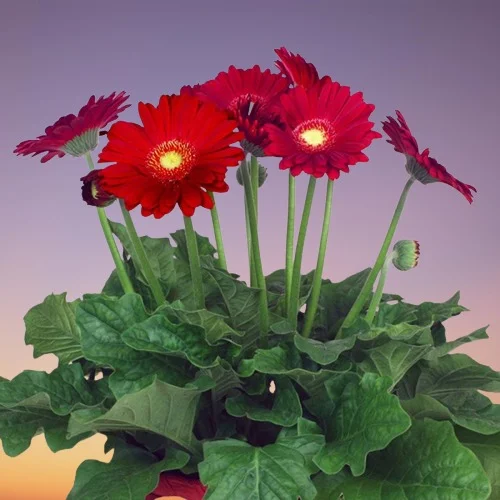10 Causes of Peace Lily Drooping Leaves and How to Fix It
Some links in this post may be affiliate links
Peace Lily is drooping due to inconsistent watering, soggy soil, extreme temperatures, direct sunshine, low humidity, nutrients deficiency, root-rot, pests infestations, salts buildup among others.
Peace Lily is an easy-care plant which flourishes in bright indirect light (dappled light), warm and moderately humid conditions and moderately moist, fertile, well-drained soil coupled with monthly feeding in the growing season. Learn how to grow and care for Peace Lily.
If you fail to provide these conditions, your plant may begin to wilt and droop. Herebelow we have listed 10 reasons why a Peace Lily may droop and how to fix them.

10 Reasons Why Peace Lily is Drooping & their Remedies
1. Poor quality soil
Poor quality soil does not drain easily and therefore it easily becomes compacted or soggy resulting in stunted growth, wilting and drooping leaves followed by yellowing and leaf loss.
How to fix it
Peace Lily thrives in fertile, loose, well-draining soils to prevent waterlogging and compaction while providing the required nutrients. Take a look at these potting mixes designed for Peace Lily which are perfect for this plant.
2. Too low humidity
Very low humidity due to very dry air will result in reduced growth, brown leaf tips and edges, drooping leaves, leaf fall and can result in plant death if not corrected.
How to fix it
To increase humidity for your Peace Lily, grow the plant in a well-lit bathroom, group the plants together, set the pot on a wet pebble tray or use a cool mist humidifier.
3. Pest infestations
Peace Lily is fairly resistant to pests. However, weak plants can be attacked by spider mites, mealy bugs, aphids and fungus gnats which are prevalent in dry, stuffy conditions. These sap-sucking insects will cause the plant to become dehydrated, begin to wilt and droop its leaves.
How to fix it
Seperate the affected Peace Lily from the rest of the plants to minimize spread.
Treat the affected plant with an insecticidal soap or neem oil as per the manufacturers' recommendations.
Regularly check underneath and between the leaves for these pests and carry out timely control measures.
Maintain the plant healthy at all times by giving it the right growing conditions.
You may discourage pest infestation by heightening the humidity as they are more common in dry conditions.
Keep the plant well pruned by removing spent flowers, dead and yellow foliage to minimize pest infestations. Cut the leaves with a clean sharp knife or scissors as close to the base as possible.
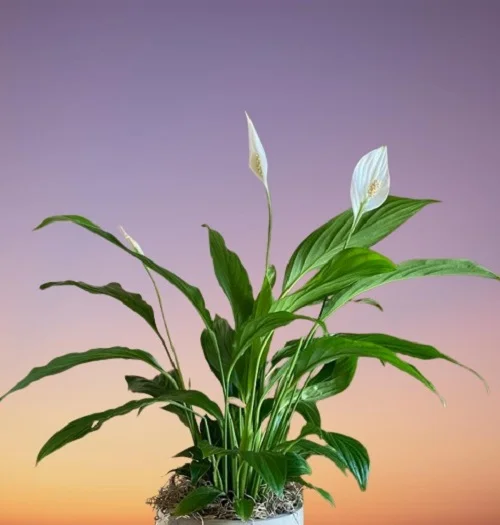
4. Root-rot disease
Root-rot is characterized by yellowing, wilting and drooping leaves and is rapidly followed by browning and plant collapse. The disease is enhanced by soggy soil.
How to fix it
Carefully, slip your Peace Lily out of its pot and inspect the roots. Brown-black mushy roots indicate root-rot, trim them off.
Treat the healthy roots with a copper-based fungicidal solution as indicated by the manufacturer.
Disinfect the pot with the fungicidal solution or use a fresh pot to repot the plant in fresh free-draining soil. Keep it dry for some time before resuming watering.
To prevent root-rot in the future, ensure that the pot has a drainage hole and the soil is well-draining. Avoid overwatering in fall and winter since growth is minimal at this time, therefore, the plant does not require much water.
5. Inconsistent watering
Underwatering implies that there is too little moisture in the soil resulting in yellowing and drooping leaves, and eventual death of the plant.
Overwatering on the other hand causes the soil to become soggy which leads to the death of the roots due to lack of oxygen. This means that they cannot take up water and therefore the leaves begin to yellow and droop.
How to fix it
Thoroughly water the plant and mist the leaves immediately and it should perk up in a short time.
Thereafter, water the plant when the top 2-3 inches of soil begin to dry out. Do not allow the soil to dry out completely for prolonged periods of time.
6. Soggy soil
Soggy soil will lead to the death of the roots due to lack of oxygen. When the roots die they cannot take up water to the leaves which begin to yellow, droop and die.
How to fix it
Pot your Peace Lily in a pot with a drainage hole and well-draining soil.
Cut down on water in fall and winter as the plant does not need a lot of water since growth is reduced at this time.
7. Hot sunshine
Exposing the plant to hot direct sunshine will result in scorching (brown leaf marks), wilting, drooping leaves and eventual death of the plant.
How to fix it
Place your Peace Lily in a more shaded spot or instal a light curtain to protect it from hot sunshine to prevent its eventual death.
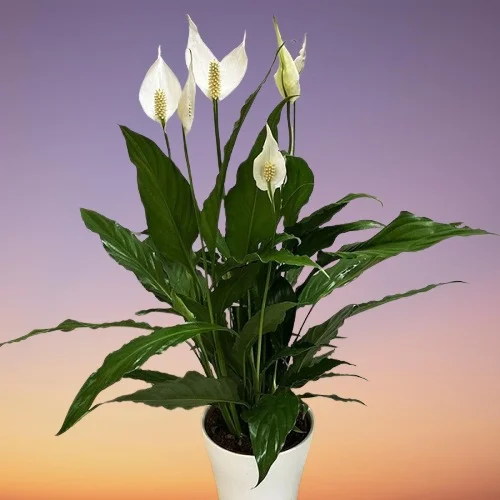
8. Extreme temperatures
Extreme temperatures (too cold or too hot) will negatively affect growth. Cold drafts will cause sudden drops in temperature which will lead to sunted growth, drooping, yellowing, browning, leaf fall and eventual death of the plant.
Too hot temperatures due to hot drafts will cause the plant to become dehydrated resulting in drooping and yellowing leaves and death of the plant if not corrected.
How to fix it
Keep your Peace Lily away from sources of drafts like drafty windows. windy doors, AC units, hot air vents, hot surfaces and others to maintain a warmth of 16-280C.
9. Being extremely pot-bound
Though Peace Lily flowers best when slightly root-bound, when extremely pot-bound the roots have filled the pot and there is very little soil to hold water when watered. This implies that there is little water for the plant to take up to the leaves. Therefore, it begins to wilt and droop.
How to fix it
Check the bottom of the pot, if you spot a lot of roots growing through the drainage hole the plant is extremely pot-bound.
Repot your Peace Lily into a pot one size larger than the current one or divide it into several sections to propagate new plants.
Thereafter, repot the plant at the beginning of the growing season when you see some roots growing through the drainage hole. Use a pot with a drainage hole and well-draining soil.
10. Salts buildup
Accumulation of salts in the soil will cause the roots to die, therefore, the plant cannot take up water to the leaves resulting in wilting and drooping. These excess salts and chemicals may originate from watering with hard water or from the fertilizers used to feed the plant.
How to fix it
Water your Peace Lily with chlorine-free water only, like rain water or filtered water as they are sensitive to chlorine and other chemicals dissolved in water.
Leach out accumulated salts regularly by running a stream of water through the soil until it drips through the drainage hole. Allow the stream of water to run for some time and repeat the process several times.
You liked it? Share on social media.
Related Content
Amazon Associates Disclosure
Homeplantsguide.com is a participant in the Amazon Services LLC Associates Program, an affiliate advertising program designed to provide a means for sites to earn advertising fees by advertising and linking to amazon.com.
